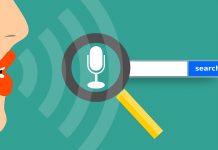Are you tired of counting sheep? Do you struggle to fall asleep or wake up feeling groggy and unrefreshed? If so, you’re not alone. Poor sleep is a common issue in today’s fast-paced world, affecting millions worldwide.
Fortunately, many tools and techniques are available to help improve sleep, and one of the most effective is Headspace-guided sleep meditation.
In this article, we’ll explore how Headspace guided sleep meditation can help you improve your sleep in just 7 days. We’ll provide an overview of the benefits of meditation for sleep, explain how Headspace works, and give a step-by-step guide to using Headspace for better rest.
The Benefits of Meditation for Sleep
Meditation has been practiced for centuries to promote relaxation, reduce stress and anxiety, and improve overall well-being. In recent years, research studies have increasingly focused on the benefits of meditation for sleep.
In this section, we’ll explore the benefits of meditation for sleep and its ability to improve insomnia, anxiety, and other sleep issues. We’ll examine the latest research studies and explain how meditation can help regulate the body’s natural sleep-wake cycle, increase melatonin production, and promote relaxation.
Scientific Evidence: How Meditation Improves Sleep Quality
Research studies have consistently shown that meditation can have significant benefits for sleep. For example, a 2015 study published in the Journal of the American Medical Association (JAMA) found that mindfulness meditation improved sleep quality in adults with moderate sleep disturbances.
Another study published in the journal Sleep Medicine in 2010 found that a mindfulness-based intervention effectively improved sleep quality and reduced insomnia symptoms in older adults.
A 2019 study published in the Journal of Sleep Research found that a short mindfulness meditation program improved subjective and objective measures of sleep quality in healthy young adults.
These studies, and many others, have demonstrated the powerful effects of meditation on sleep quality and suggest that incorporating a regular meditation practice into your bedtime routine may be an effective way to improve your sleep.
How Meditation Can Improve Sleep Quality: Managing Insomnia, Anxiety, and Other Sleep Issues
Meditation is an effective tool for improving sleep quality and managing sleep disorders such as insomnia. It can also help alleviate anxiety and stress, common causes of sleep issues. Here are some of the ways that meditation can help with insomnia, anxiety, and other sleep issues:
- Regulating the body’s natural sleep-wake cycle
- Increasing melatonin production
- Reducing stress and anxiety
- Decreasing muscle tension and promoting relaxation
- Improving overall mood and well-being
- Enhancing self-awareness and mindfulness
- Reducing negative thoughts and feelings that may contribute to sleep difficulties
Incorporating regular meditation into your bedtime routine may improve sleep quality and help you experience more profound, more restful sleep.
How Headspace Works for Sleep
Headspace-guided meditation is a form of meditation that is designed to be accessible, easy to follow, and effective in promoting relaxation and mindfulness. Headspace is a mobile app that provides guided meditations and other mindfulness practices for various topics, including sleep, stress, anxiety, and more.
In Headspace guided meditation, a trained teacher provides step-by-step guidance through the meditation process, using breathing exercises, visualization, and body scans to help individuals focus their attention and calm their minds.
The Headspace app offers a variety of meditation options, from short 1-3 minute meditations to longer 10-20 minute sessions. Headspace-guided meditation can be used at any time, but it is particularly effective when used as part of a daily routine, such as a morning or bedtime ritual.
Whether you’re a beginner or an experienced meditator, Headspace guided meditation can offer a powerful tool for promoting relaxation, mindfulness, and overall well-being.
The Benefits of Incorporating Headspace Sleep Stories into Your Nighttime Ritual
Headspace Sleep Stories is an innovative tool that can improve sleep quality. These stories are designed to help individuals relax and fall asleep more easily by incorporating calming themes and mindfulness practices. Here are some additional features of Headspace Sleep Stories and how they can be used for better sleep:
- Calming themes: sleep stories feature calming themes such as nature, travel, and guided meditations that can help promote relaxation and reduce stress.
- Variety of narrators: the stories are narrated by different voices, providing a unique and engaging experience each time.
- Length and format: they are typically 45-60 minutes in length, making them an ideal option for individuals who have trouble falling asleep and staying asleep throughout the night.
- Connection with mindfulness: they also connect with mindfulness, allowing individuals to practice relaxation techniques and develop a more mindful approach to sleep.
- Range of genres: they are available in various genres, from science fiction to nature and travel, providing options for every taste and preference.
- Authentic soundscapes: each sleep story is accompanied by a unique soundscape that complements the theme and enhances the overall experience.
- Professional production: they are professionally produced with high-quality sound and narration, providing a truly immersive experience.
- Personalization: Headspace offers a feature that allows users to customize their Sleep Stories by selecting specific narrators and themes that match their preferences.
By incorporating Headspace Sleep Stories into your bedtime routine, you may be able to experience a deeper, more restful sleep and wake up feeling refreshed and energized.
Seven-day Plan for Better Sleep With Headspace
The Seven-day Plan for Better Sleep with Headspace is a program designed to help individuals improve their sleep quality over one week. This program incorporates guided meditations, sleep stories, and other mindfulness practices to promote relaxation and help individuals fall asleep more easily.
Each day of the program focuses on a specific aspect of sleep and offers a guided meditation or sleep story to help individuals relax and prepare for a restful night’s sleep. The program also includes tips and suggestions for improving sleep hygiene, such as creating a comfortable sleep environment and establishing a consistent bedtime routine.
Here is a breakdown of the seven-day plan:
Day 1: Establishing a Sleep Routine
Establishing a consistent sleep routine is key to improving sleep quality. On this day, Headspace offers guided meditations and sleep stories that can help individuals create a relaxing bedtime routine and improve their sleep hygiene.
Day 2: Relaxing the Mind and Body
Relaxation is essential for promoting restful sleep. On this day, Headspace offers guided meditations and bedtime stories that focus on relaxation techniques such as progressive muscle relaxation and visualization.
Day 3: Managing Stress and Anxiety
Stress and anxiety can have a significant impact on sleep quality. On this day, Headspace offers guided meditations and sleep stories that can help individuals manage stress and anxiety and promote relaxation.
Day 4: Mindful Breathing for Sleep
Mindful breathing is a powerful tool for calming the mind and preparing the body for sleep. On this day, Headspace offers guided meditations that focus on mindful breathing techniques and promote relaxation.
Day 5: Cultivating Gratitude and Positivity
Cultivating positive thoughts and feelings can help promote relaxation and reduce stress and anxiety. On this day, Headspace offers guided meditations and sleep stories that focus on gratitude and positivity.
Day 6: Body Scan Meditation for Deeper Relaxation
Body scan meditation is a technique that involves focusing on different parts of the body to promote relaxation and mindfulness. On this day, Headspace offers guided meditations that focus on body scan techniques and encourage more profound relaxation.
Day 7: Letting Go of the Day and Preparing for Tomorrow
Letting go of the day’s stress and worries is essential for promoting restful sleep. On this day, Headspace offers guided meditations and sleep stories to help individuals let go of the day and prepare for tomorrow.
By following this seven-day plan, individuals can learn to incorporate mindfulness practices into their bedtime routine and improve their sleep quality.
Other Tips for Improving Sleep
In addition to the Seven-day Plan for Better Sleep with Headspace, many other tips and strategies can be used to improve sleep quality. These tips range from simple lifestyle changes to more intensive therapies and can be effective for individuals with a wide range of sleep issues.
Combining Headspace with other sleep hygiene practices can help promote optimal sleep quality and improve overall well-being. Here are some additional tips and strategies for improving sleep hygiene that can be used in conjunction with Headspace:
- Limiting caffeine and alcohol intake: caffeine and alcohol can disrupt sleep quality and lead to restless nights. Restrict intake of these substances, particularly in the evening, can promote better sleep.
- Creating a comfortable sleep environment: the sleep environment is crucial in promoting restful sleep. Keeping the bedroom cool, dark, and quiet can help create a comfortable sleep environment.
- Establishing a consistent sleep schedule: going to bed and waking up simultaneously daily can help regulate the body’s internal clock and promote better sleep.
- Regular physical activity: exercise has been shown to improve sleep quality and promote relaxation. Regular physical activity, particularly earlier in the day, can help promote better sleep.
- Practicing relaxation techniques: in addition to Headspace guided meditations, other relaxation techniques such as deep breathing, progressive muscle relaxation, and yoga can help promote relaxation and prepare the body for sleep.
By incorporating these tips and strategies into your daily routine with Headspace, you can create a comprehensive approach to improving sleep hygiene and promoting optimal sleep quality.
Tips for Creating a Sleep-friendly Environment
Creating a sleep-friendly environment is essential for promoting restful sleep and improving sleep quality. Here are some tips for creating a sleep-friendly environment in your bedroom:
- Keep the room cool: a more comfortable room temperature can promote better sleep and prevent restlessness. The ideal temperature is typically between 60 and 67 degrees Fahrenheit.
- Block out the noise: noise can disrupt sleep and lead to restlessness. Earplugs or a white noise machine can help block noise and promote better sleep.
- Make the room dark: exposure to light can disrupt the body’s internal clock and make it harder to fall asleep. Using blackout curtains or an eye mask can help create a dark sleep environment.
- Invest in a comfortable mattress and pillows: a comfortable mattress and pillows can promote better sleep posture and reduce the risk of discomfort or pain while sleeping.
- Keep electronics out of the bedroom: the blue light emitted by electronic devices can disrupt sleep and make it harder to fall asleep. Keeping electronics out of the bedroom can help create a more relaxing sleep environment.
By implementing these tips for creating a sleep-friendly environment, you can help promote better sleep and overall sleep quality.
Frequently Asked Questions About Headspace
Below is the list of some of the most frequently asked questions about Headspace. Provide answers to help you better understand how the program works and whether it may be a helpful tool for you.
Is Headspace free?
Headspace offers a free version that includes access to a limited selection of guided meditations, sleep sounds, and sleep stories, as well as a ten-day introductory course to meditation.
What types of meditation does Headspace offer?
Headspace offers a variety of guided meditations that focus on different themes, such as stress, anxiety, and sleep. The program also provides mindfulness exercises that can be used throughout the day to promote relaxation and improve focus.
Can Headspace help with sleep issues?
Yes, Headspace offers a range of sleep-focused content, including guided meditations, sleep sounds, and sleep stories, that can help individuals improve their sleep quality and fall asleep more easily.
Is Headspace suitable for beginners?
Yes, Headspace offers a ten-day introductory meditation course designed for beginners. The program also offers guided meditations and other content suitable for individuals of all experience levels.
Can Headspace be used offline?
Yes, Headspace offers an option to download content for offline use. It can be helpful for individuals who need access to a reliable internet connection.
What is Headspace Plus, and what does it include?
Headspace Plus is a paid version of the program that offers a more extensive selection of content, including hundreds of guided meditations and sleep stories, personalized meditation courses and other features.
Is Headspace evidence-based?
Yes, Headspace uses evidence-based mindfulness techniques and has been the subject of multiple research studies demonstrating its effectiveness in promoting mental and physical well-being.
Can Headspace be used for anxiety and stress relief?
Yes, Headspace offers a range of content designed to help individuals manage stress and anxiety, including guided meditations and mindfulness exercises.
How much time must I dedicate to Headspace daily to see benefits?
Headspace recommends dedicating ten minutes daily to meditation to see the benefits. However, even shorter meditation sessions can help promote relaxation and reduce stress.
Conclusion
Headspace-guided meditation can be an effective tool for improving sleep quality and promoting overall well-being. By following the Seven-day Plan for Better Sleep with Headspace, individuals can establish healthy sleep routines, manage stress and anxiety, and promote relaxation for a better night’s sleep.
Additionally, Headspace sleep stories can be a helpful tool for relaxation. We encourage you to try Headspace for seven days to experience the benefits for yourself. With regular use, Headspace can help you achieve a deeper, more restful sleep and wake up refreshed and rejuvenated.


![[2023] Social Media Apps That are Safe for Kids](https://appsontheway.com/wp-content/uploads/2023/04/phone-gf90dfa0dc_1920-218x150.jpg)










